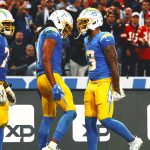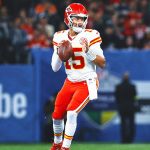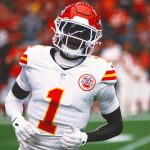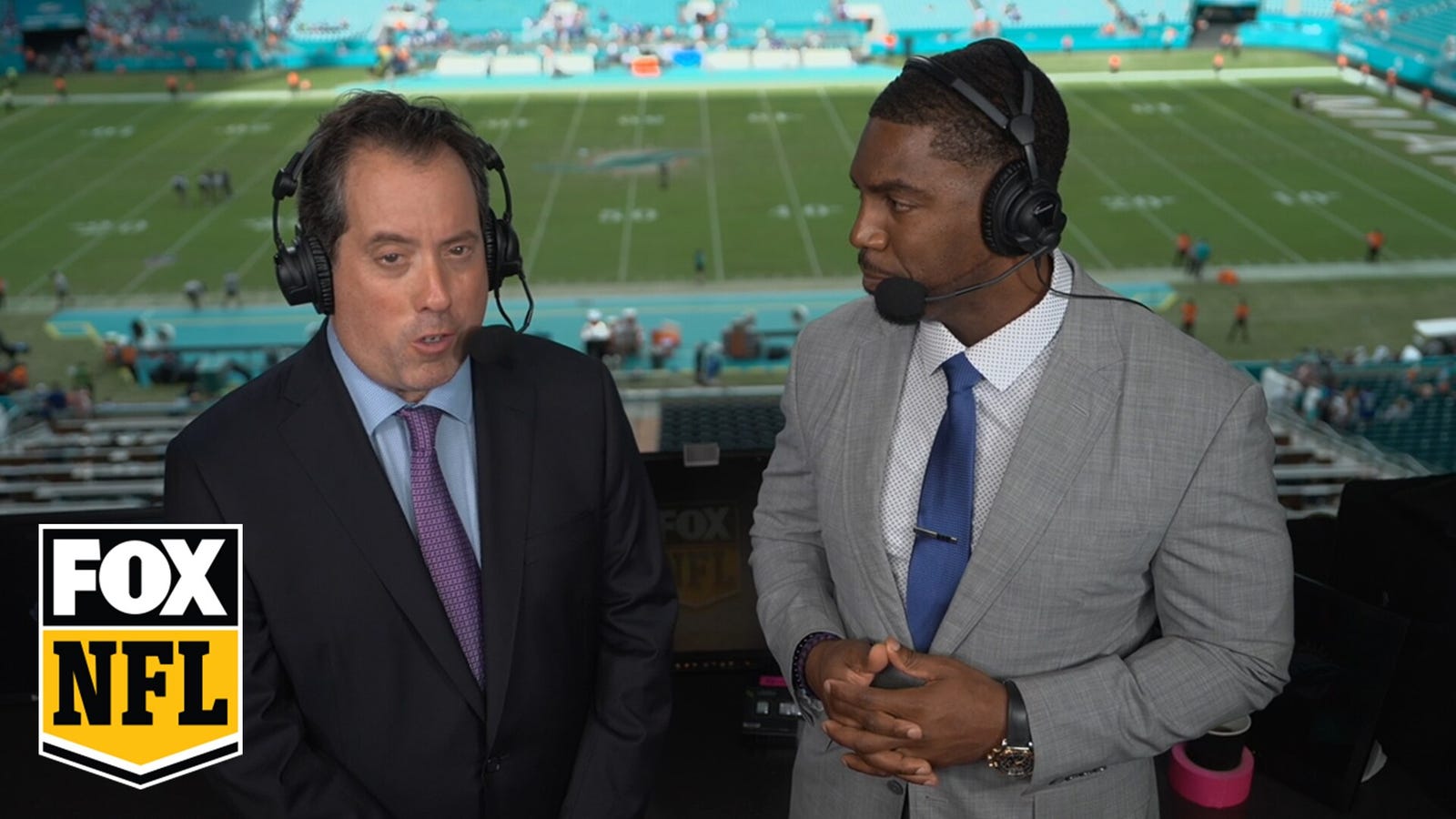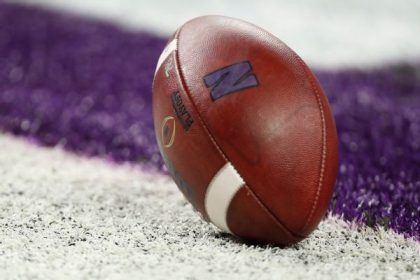The beating that Daniel Jones seems to take every Sunday is only slightly worse than the ones he takes every other day of the week. Other players, former players, fans and media have turned the art of bashing the Giants franchise quarterback into a favorite national sport.
Maybe everyone’s right. Maybe that $40 million-per-year contract the New York Giants gave him in March will prove to be a colossal waste of money. Maybe he isn’t an elite quarterback. Maybe the Giants would be better off moving on with another young quarterback in the next draft.
One question, though: With Jones playing behind this travesty of an offensive line, how would anyone know?
Seriously, it would be one thing if Jones were proving to be incapable of hitting open receivers when he had plenty of time to find them, but that’s not the case for this disappointing, 1-4 Giants team. It would be a red flag if he had three seconds to process where the blitz was coming from and adjust accordingly, but he rarely has that luxury.
ADVERTISEMENT
Jones spends most of his time on the field in the center of a collapsing pocket, forced to make quicker decisions than the play designs allow. And the rest of his time on the field is spent with him running for his life. He has been sacked an astonishing 28 times this season in just five games — including a ridiculous 16 times in the last two games.
He’s also taken an obscene 50 hits, according to the NFL’s official stats — a number that, honestly, feels low. And that doesn’t count all the ones he’s been forced to take as an unscheduled runner. Through four games, Pro Football Focus had recorded Jones being pressured 46 percent of the time he dropped back to pass, and that number surely went up on Sunday in Miami.
That’s why, outside of one glorious and anomalous half in Week 2 in Arizona, the Giants’ offense is averaging 4.9 points per game.
So it was hardly a shock when Jones left the Giants’ 31-16 loss in Miami on Sunday with a neck injury suffered, of course, on a sack. The only surprising things are that it didn’t happen sooner, and that he’s still able to walk off the field at all. And it shouldn’t be surprising that he’s only thrown for 884 yards and two touchdowns, or that he’s already thrown more interceptions (six) than he did all of last year.
What do you expect when defenders are getting to him almost as quickly as the ball after it’s snapped? What do you expect when every game there’s some miscommunication that leaves right tackle Evan Neal standing still as an edge rusher flies by him? What do you expect when the first decision Jones has to make on every play is figuring out which pass rusher is going to hit him first?
“Yeah, you don’t want that,” Giants coach Brian Daboll said. “Affecting the quarterback plays an important role in the game, and we got to figure out a way to protect him better.”
No kidding.
It’s not that Jones can’t take it. He’s proven himself to be more than tough enough as the quarterback of the Giants. He has taken a beating over the years — physically and emotionally — and he showed last year he has the skills to thrive. He carried the Giants to the playoffs, despite playing behind an offensive line that was average at best — several levels above this year’s group — and with a receiving corps that was among the worst in the NFL.
This year he’s got more weapons around him, but the line has regressed. Badly. It was bad from the beginning, when they were overwhelmed by the Dallas Cowboys in a 40-0 opening night loss. Jones was sacked seven times that night and hit 12 times, setting an ominous tone for what was to come. With no time for his receivers to get any separation, he had no chance. Eight of his 28 pass attempts were knocked away.
The Giants lost left tackle Andrew Thomas to a hamstring injury that night — a terrible loss considering he had grown into one of the best left tackles in the league. Then everything just unraveled from there. They were missing two other linemen on Sunday against the Dolphins — rookie center John Michael Schmitz (shoulder) and guard Shane Lemieux (abductor). Backup center Ben Bredeson and right tackle Evan Neal were dealing with their own injuries. Then they lost backup guard Marcus McKethan to an injured knee.
All that is bad, but their actual play is worse. Neal, the seventh overall pick in the 2022 draft, has been atrocious — a fact, whether he likes the media and fans pointing that out or not. Josh Ezeudu, a third-rounder last year, was so bad on Sunday he apologized to Jones after the game. He had two false starts and a holding penalty in the same series before getting beat for the sack that knocked Jones out of the game.
Daboll ended up benching Ezeudu, replacing him with Matt Peart, and he probably has four other offensive linemen that deserve to be benched too. But he was already forced to turn to two linemen straight off the practice squad on Sunday, and they might soon be forced to turn to 33-year-old Justin Pugh, a 2013 first-rounder the Giants signed to the practice squad last week, who hasn’t played since he tore his ACL last October.
Maybe changes will help, but at this point there are no magic moves to be made. The line is just bad. It’s so bad it may have already destroyed the Giants’ season. And it’s starting to ruin Jones the way poor offensive line play ruined the final few years of the Eli Manning era.
Jones, ever the diplomat and good teammate, took some of the blame himself, saying “I think I got to do a better job getting the ball out of my hands and taking advantage of the opportunities that are there.”
OK, but what opportunities? The biggest criticism of Jones has been that he’s missing open receivers, as if he’s gotten more than two seconds at any point to actually find an open receiver. Most of them aren’t open until after he ducks out of the way of the first incoming rusher. Sure, there have been times he could throw a little faster, but a quarterback can’t keep throwing all game before he’s even allowed to set his feet. And the idea that he has time to get to his second or third read on any given play is just a fantasy. There is almost never any time for that.
About the only thing Jones can do is what he does best — run. Run away. As fast as he can. That’s been the Giants’ best play for the last two seasons and it’s about the only thing they’re doing well right now. Although, with Saquon Barkley out for the last month with an ankle sprain, the Giants haven’t been able to run their play-action and run-pass-option game, making Jones’ runs less of an effective option than they once were.
Are there things Jones and the coaches can do to counteract the crumbling line? Of course. They are hardly the only NFL team with offensive line injuries. The Chicago Bears line is a mess and they somehow gave Justin Fields plenty of time last Thursday against a formidable Washington pass rush. The Dolphins just lost left tackle Terron Armstead to a knee injury last week, and they held up well enough for quarterback Tua Tagovailoa to throw for 308 yards and get sacked only once.
Why can’t the Giants work around line problems like that? It’s a mystery they’ve been trying to solve for most of the last decade. And to be fair, it’s not like they’ve ignored their biggest problem. Thomas and Neal are both top-7 picks. Schmitz is a second-rounder. Ezeudu’s a third-rounder. Guard Mark Glowinski, a former starter who was benched after the opener, was a $20 million free agent last year. So there’s presumably plenty of talent there.
At least there was supposed to be. But somewhere it’s been lost in translation, and Jones is being punished for their failures. He’s under siege so quickly, so often, he has no chance to take advantage of the downfield speed of rookie Jalin Hyatt. He can’t even wait long enough for tight end Darren Waller, the Giants’ prized offseason acquisition, to get open closer to the line of scrimmage.
There isn’t time for anything to develop. And Jones is showing signs of understandably happy feet, bailing out on some plays even when he probably didn’t have to flee.
Blame the quarterback for that if you want, but that’s what happens when a line doesn’t hold up. The offense stalls, the quarterback becomes shellshocked, and nothing works.
Maybe Jones isn’t good enough to make it work anyway, but it’s hard to imagine any quarterback in the NFL thriving behind this porous line. They all seem to have better lines or better coaching or better ideas of how to make their quarterback functional.
Do those other quarterbacks have better talent than Jones, too? Maybe. Time will tell. But be fair. When Jones is spending all his time running, or taking hits, or laying on his back, how is anyone really supposed to know?
Ralph Vacchiano is the NFC East reporter for FOX Sports, covering the Washington Commanders, Philadelphia Eagles and New York Giants. He spent the previous six years covering the Giants and Jets for SNY TV in New York, and before that, 16 years covering the Giants and the NFL for the New York Daily News. Follow him Twitter at @RalphVacchiano.
NFL trending
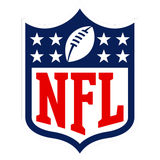
Get more from National Football League Follow your favorites to get information about games, news and more

